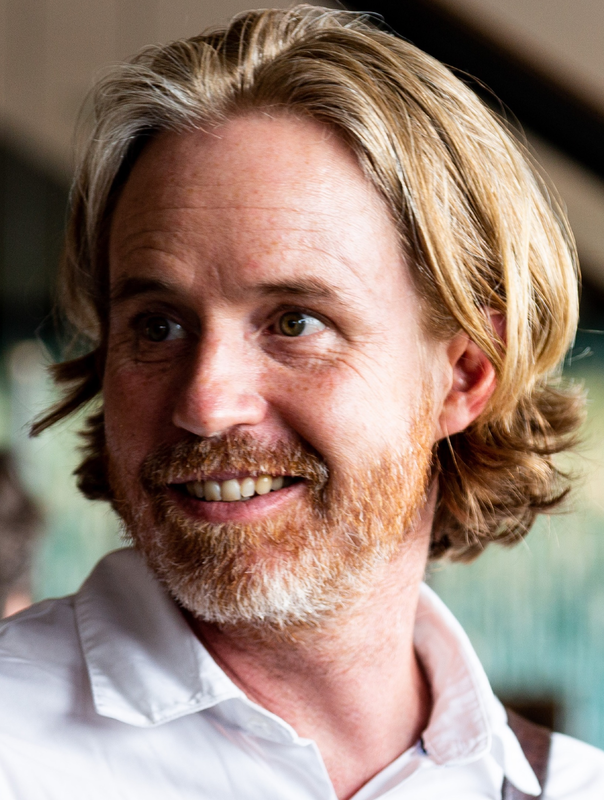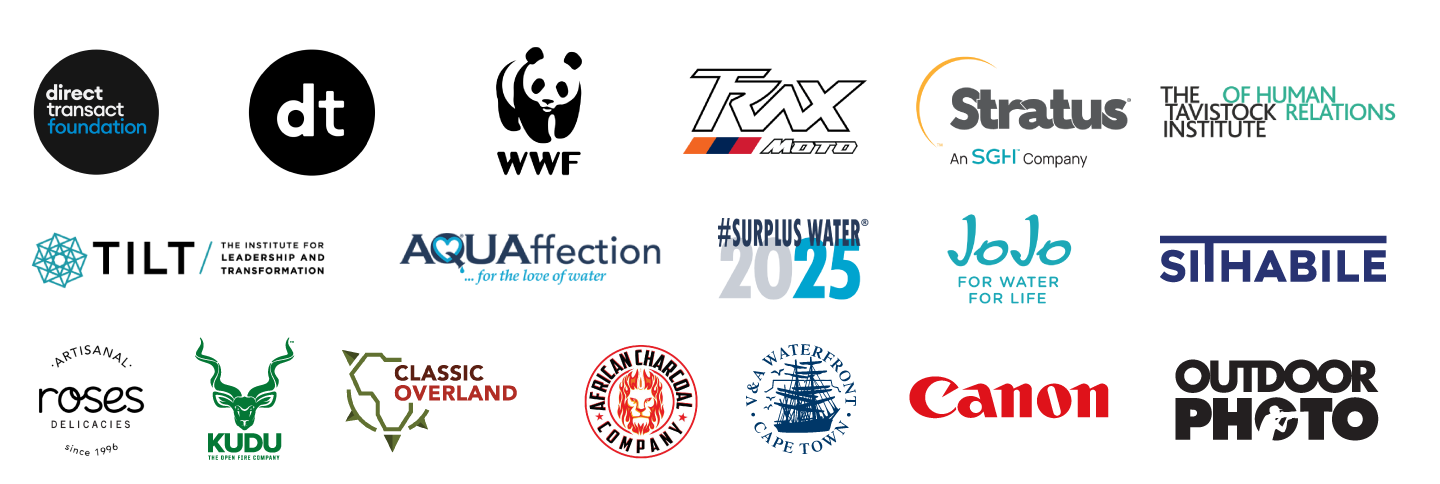|
(English translation below)
Dag 18: Chaos in Matadi Om ons Matadi-belewenis te beskryf voel onmoontlik. Hoe kan mens in woorde iets vervat wat jyself nog nooit eers kon verbeel nie? Waarvoor jy geen bestaande kategorieë van sin-maak het nie? Ek sal met 'n foto begin wat ek in my kop geneem het, dan uitzoom. Dis van jong man se gesig. Sopnat gesweet. 'n Wanhopige vasbyt in sy oë. Soos iemand wat niks meer krag ooorhet nie, maar weet daar is geen einde in sig nie. Slegs aanhou voortbeur. Hy bestuur 'n geel Keweseki drie-wiel vragmotorfietsie. Tot barstens toe gestapel met waterkanne. Vier goedhartiges wat loop en stoot van agter af. Die kronkelpas uit. Nou bietjie uitzoom. Rondom die Keweseki is nog omtrent 'n duisend motorfietsies en Keweseki's. Met passasiers en goedere, van haarnaalde tot skeepsankers, en lewendige bokke en varke en hoenders met toue vasgebind vir later se maal. En drie 26-ton vragmotors, twee oppad op, en een oppad af. Een het gebreek, en toe die ander twee probeer verbyskuur, sit hulle vas tussen die rotswande langs die pad. Dis 42 grade celcius met 100% humiditeit. Soos 'n geblokkeerde filter het die motorfietsies teen die vragmotormuur begin vasdruk in beide rigtings: een lot oppad bergop, die ander lot oppad af. Stywer en stywer teen mekaar ingewikkel totdat niemand links of regs of vorentoe of agtertoe kon beweeg nie. Ons was oppad af. Vir omtrent 'n uur het ons en ons mede vasgedruktes so gestaan en stoom en sweet. Later het 'n man begin beheer neem. Die een vragmotor gekry om 'n duim vorentoe te beweeg die opdraende uit. Eers een, en toe nog 'n offisier met AK 47's het kom help. Die afdrukkende massa beveel om agteruit te beweeg sodat die vragmotor nog 'n duim vorentoe kan kom. Dis maklik: swaai 'n AK en mense beweeg teen die wette van swaartekrag. Ons swaar motorfietse kon nie agteruit nie. Maar die massa moet terug en helpende hande van voor en agter stoot en trek ons ysterkamele agtertoe. Deernis in hulle verstaan van ons tameletjie al is ons teenwoordigheid en reuse-fietse en pantserklere totaal onverstaanbaar. Nou word almal van onder en bo in twee rye enkelgelid miere gekanaliseer sodat die spul kan vloei. Dis toe dat die outjie van voor se gesig my oog vang, en ek my denkbeeldige foto neem. Beseffende dat die armende drommel se Keweseki nie wil loop nie, maar hy móét vorentoe. Nog meer uitzoom: Matadi lê teen die heuwels aan die Suidelike oewer van die Kongo-rivier. Naby genoeg aan die reuse riviermonding dat groot skepe hul vragte daar kan aflaai om per vragmotor na Kinshasha vervoer te word. Daar is ook 'n brug, die enigste brug vir honderde kilometer, oor die rivier, wat beteken die goedere kan ook aan die ander kant van die rivier na Brazzaville vervoer word. En die hoofpad vir al die tonne en tonne twintig- en veertig-voet skeepshouers vol goedere en roumateriale wat die DRC met die res van die wêreld verbind, loop reg deur die middel van Matadi. 'n Pad so breed soos Pierneefstraat in Pretoria. Soms smaller, want daar is stalletjies van hout en plastiek en 'n wemeling van mense langs die pad. En die wegvreet van jare se verbrokkeling maak hom ál nouer. Later, natgesweet en effens in skok, ry ons oor die brug en hou aan die ander kant stil om die eeue-oue rivier te waardeer. Die diepste ter wêreld. Sy pad deur die kontinent gekalwe soos wat die mense van Matadi hulle weg moet vind tussendeur vragmotors waarvoor daar eintlik 'n verbypad moes gewees het. Nog een foto: 'n Dogtertjie, seker so tien jaar oud, met haar klein boetie aan die hand. Beide in netjiese skoolkleertjies oppad huistoe. Hulle skuur doodluiters by die drukkende chaos verby. Die vragmotorwiele meer as dubbel hulle hoogte. Day 18: Chaos in Matadi Describing our experience in Matadi feels impossible. How can one put into words something you've never even imagined? Something for which you have no existing sense-making categories? I'll start with a mental image that I captured, then zoom out. It's of a young man's face. Drenched in sweat. Desperation in his eyes. Like someone who has no strength left but knows there's no end in sight. Only the relentless continuation. He's driving a yellow Keweseki three-wheel cargo motorcycle, loaded to the brim with water containers. Four kind-hearted souls pushing from behind. Upwards along the twisting mountain pass. Now, let's zoom out a bit. Around the Keweseki, there are approximately a thousand motorcycles and Kewesekis. With passengers and goods, from hairpins to ship anchors, and live goats and pigs and chickens, tied up for dinner later. And three 26-ton trucks, two going up, and one coming down. One broke down, and when the other two tried to overtake it, they got stuck between the rocky walls along the road. It's 42 degrees Celsius with 100% humidity. Like a clogged filter, the motorcycles started pressing up against the wall of trucks in both directions: one crowd going uphill, the other downhill. They pressed tighter and tighter against each other until no one could move left or right or forward or backward. We were going downhill. For about an hour, we and our fellow stuck ones, stood there, steaming and sweating. Later, a man took control. He got one of the trucks to move an inch forward up the hill. First one, and then another officer with AK-47s came to help. The pressing mass was ordered to move backward so the truck could inch forward again. It's easy: swing an AK, and people move against the laws of gravity. Our heavy motorcycles couldn't move backward. But the mass had to move back, and helping hands from the front and rear pushed and pulled our packing camels backward. They understood our predicament, even though our presence and giant bikes and armoured clothing were utterly incomprehensible. Now, everyone was channelled into two single-file rows from above and below, like ants, so things could flow. It was then that the face of the young man caught my eye, and I took my imaginary photo, realizing that the poor fellow's Keweseki had stopped running, but he had to move forward. Zoom out even more: Matadi lies against the hills on the southern bank of the Congo River. Close enough to the massive river mouth that large ships can unload their cargo there, to be transported further to Kinshasa by truck. There's also a bridge over the river, the only bridge for hundreds of kilometers, which means goods can also be transported to Brazzaville on the other side of the river. The main road connecting the DRC with the rest of the world for all the tons and tons of twenty- and forty-foot shipping containers full of goods and raw materials runs right through the middle of Matadi - a road as wide as Pierneef Street in Pretoria. Sometimes narrower because there are stalls made of wood and plastic and a throng of people along the road. And the erosion of years makes it even narrower. Later, drenched in sweat and somewhat in shock, we drove across the bridge and stopped on the other side to appreciate the ancient river. The deepest in the world. Its path carved through the continent just as the people of Matadi have to find their way through the trucks that should have had a bypass. One more photo: A little girl, maybe around ten years old, holding her little brother's hand. Both in neat school uniforms on their way home. They navigate the daily chaos in their stride. The truck wheels more than twice their height. https://www.backabuddy.co.za/expedition-h2o-back-to-basics
0 Comments
Leave a Reply. |
AuthorThis blog was written by Dr. Jean Cooper. For my work as organisational psychologist, adventurer and writer, go to www.jeanhenrycooper.com |





